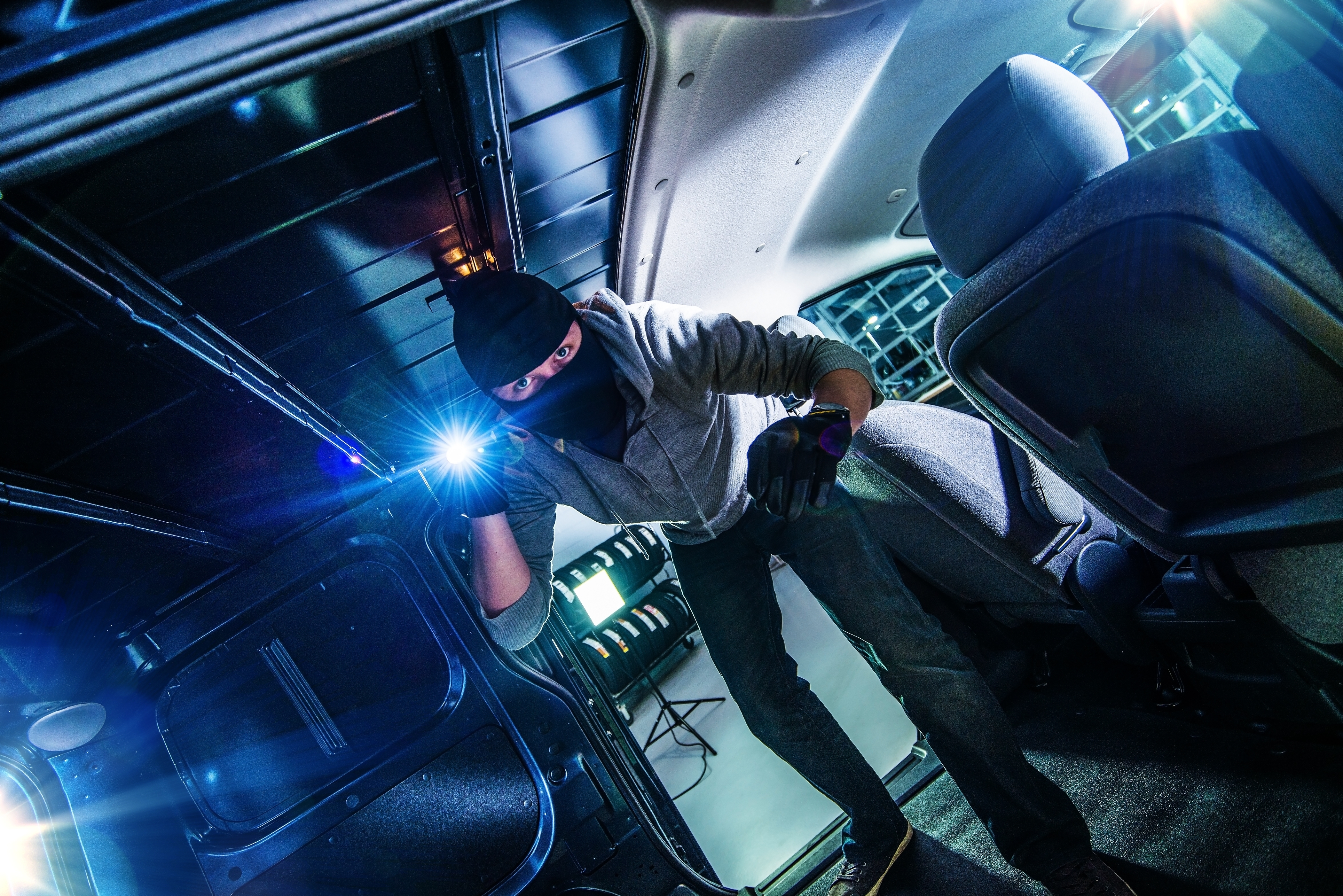
Miranda Blake
Советы по обеспечению безопасности вашего автомобиля: Защита грузовика от угона
Создано: 14.11.2024
•
Обновлено: 14.11.2024
Компании, занимающиеся грузоперевозками в Великобритании и Европе, могут значительно снизить риск кражи транспортных средств и грузов. Защита грузового автомобиля - это не только обеспечение безопасности самого транспортного средства; она предполагает комплексный подход, включающий технологии, обучение, привлечение общественности и упреждающее планирование. Приняв правильные меры, руководители автопарков могут обеспечить безопасность водителей и сохранность имущества, создавая безопасную среду для своей деятельности.
Что должны делать водители
Закрепление автомобиля
Усильте защиту автомобиля, используя различные приспособления, такие как навесные замки, пломбы с уникальными номерами и тентовые шнуры. Их следует устанавливать сразу после погрузки, чтобы создать дополнительный уровень защиты от несанкционированного доступа.
Проведение тщательных проверок очень важно. После каждой остановки уделите время осмотру вашего грузовика и его груза. Ищите любые признаки взлома или подозрительной активности. Бдительность имеет решающее значение для предотвращения краж.
Документация
Ведите полный контрольный список безопасности транспортных средств. Он должен быть легко доступен для просмотра сотрудниками пограничных сил или других органов власти, когда это потребуется. Это не только продемонстрирует вашу приверженность делу, но и поможет в процессе расследования в случае кражи.
Безопасные места
Выбирайте хорошо освещенные и оживленные места для парковки. Места с интенсивным пешеходным движением и камерами наблюдения менее привлекательны для воров. По возможности используйте специально отведенные охраняемые парковки, оборудованные ограждениями по периметру и современными системами наблюдения или сотрудниками службы безопасности. Такие места обеспечивают дополнительный уровень безопасности. Для ночной парковки выбирайте места, которые освещаются и находятся под наблюдением.
Найдите безопасную парковку для грузовиков на своем маршруте с помощью карты SNAP map.

Технологии и оборудование
Внедрение передовых технологий может значительно повысить безопасность вашего автомобиля. Оборудуйте свой грузовик современными системами, включая GPS-слежение, иммобилайзеры и тревожные сигнализации. Они не только предотвратят кражу, но и помогут восстановить автомобиль в случае инцидента.
Планирование маршрутов
Кроме того, эффективное планирование маршрутов поможет вам избежать зон повышенного риска. Используйте программное обеспечение, позволяющее планировать маршруты доставки и при этом избегать известных мест кражи грузов. Внедрение телематики и GPS-технологий для мониторинга автомобиля в режиме реального времени позволит вам отслеживать его местоположение и следить за соблюдением запланированных маршрутов.
Что должны делать операторы автопарков
Протоколы и системы безопасности
Для всех водителей важен четко определенный набор протоколов безопасности. Как оператор автопарка, вы можете предоставить исчерпывающие письменные инструкции с подробным описанием мер безопасности, которым они должны следовать. Такой подход гарантирует, что все будут придерживаться единых правил безопасности.
Вы должны обучить водителей тому, как эффективно использовать системы, установленные на их грузовиках. Знакомство с этими устройствами может повысить их эффективность. Нелишним будет также рассказать им о потенциальных угрозах и важности бдительности. Они должны знать о распространенных тактиках, используемых ворами, и о том, как правильно реагировать.
Поддержание грузовиков в оптимальном состоянии снижает риск поломок, которые могут привести к краже. Внедрите проактивный график технического обслуживания, чтобы ваши автомобили всегда были в хорошем рабочем состоянии. Регулярные проверки помогут предотвратить механические поломки, которые могут сделать ваши грузовики уязвимыми.
Общение и сообщество
Установление четких каналов связи жизненно важно для эффективного управления безопасностью. Поддерживайте открытую связь между водителями, диспетчерами и сотрудниками службы безопасности. Это позволяет немедленно сообщать о любых подозрительных действиях или проблемах с транспортным средством. Поощряйте водителей периодически отмечаться в течение всей смены.
Взаимодействие с местным сообществом может усилить ваши меры безопасности. Сотрудничайте с другими предприятиями и местными правоохранительными органами, чтобы обмениваться информацией о потенциальных угрозах. Коллективный подход может повысить осведомленность и привести к более эффективным стратегиям предотвращения преступлений. Участвуйте в общественных инициативах, которые направлены на это - налаживание отношений может создать сеть поддержки, которая поможет защитить ваши активы.
Планы реагирования
Наличие надежного плана на случай чрезвычайных ситуаций может смягчить последствия кражи. Разработайте четкие протоколы реагирования на инциденты. В них должны быть указаны шаги по сообщению о происшествии, обращению в правоохранительные органы и уведомлению страховой компании. Убедитесь, что все водители ознакомлены с ними - они должны знать, как действовать быстро и эффективно.
Ситуационная осведомленность
Приучение водителей быть внимательными к своему окружению может предотвратить кражи. Обучите их тому, как распознать подозрительную активность вокруг автомобиля, и посоветуйте им доверять своей интуиции и сообщать о любых необычных явлениях. Кроме того, подчеркните важность приоритета личной безопасности над безопасностью груза. Если вор столкнулся с ними, они должны подчиниться и сообщить о случившемся властям, как только это будет безопасно.
Мониторинг топливных операций с помощью SNAP
Мы предоставляем интеллектуальную платежную систему, которая автоматически регистрирует и отслеживает операции с топливом. Когда водители заправляют свои автомобили в любой из 3500 с лишним точек по всей Великобритании, они просто предъявляют свою топливную карту SNAP Fuel для оплаты операции, что исключает необходимость использования наличных или кредитных карт, упрощая процесс.
Система автоматически заносит каждую операцию с топливом на счет, связанный с номерным знаком автомобиля. Такая автоматизация избавляет водителей от необходимости вручную собирать и предоставлять квитанции, снижая административную нагрузку и вероятность ошибок.
Руководители автопарков ежемесячно получают детализированные счета-фактуры, содержащие подробный обзор деятельности по всем автомобилям, что позволяет легко отслеживать расход топлива и траты по всему автопарку.
SNAP Fuel интегрируется с другими услугами SNAP Account, позволяя менеджерам автопарков отслеживать не только топливные операции, но и услуги парковки и мойки в едином аккаунте, обеспечивая комплексное представление об операциях и расходах. [Подробнее о SNAP Fuel можно узнать здесь] (https://snapacc.com/snap-fuel/).



